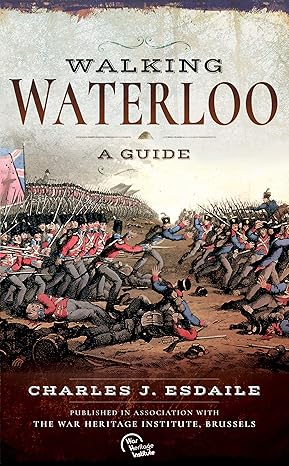Battle of Blue Licks
By Isaac Mounce
The Western Theater of the American Revolutionary War is an obscure topic in United States history of the period. Compared to the war in the original Thirteen Colonies, the Western. Compared to the war in the original Thirteen Colonies, the Western Theater – in what became Kentucky, Indiana, Ohio, and Illinois – is a side note. Nevertheless, the war that saw the beginning of the United States’ western expansion saw some of the most brutal scenes of the war between American settlers and British-backed Native Americans. The primary focus on the American’s expansionist ambitions was on Kentucky. Furthermore, while many Revolutionary War enthusiasts think of the Battle of Yorktown as the war’s end, Kentucky would serve as the site for the last major battle on August 19, 1782. Though small-scale by eastern theater standards, the Battle of Blue Licks went down as one of the most bloodiest and heart wrenching battles in Kentucky. However, Blue Licks turned out to be pointless victory for the Native tribes in their effort to force the settlers out of their homelands.
Battle of Camden: False Hope
By Vernon E. Yates / Robert Shawlinski
With the fighting in the North at a stalemate during the revolt, the British needed a change and direction, this slowly begin to take shape in London. This change of policy called for the British to become more mobile and to use its littoral advantages over the rebels. The British decided that they would leave the troublesome New England Colonies for the vast plantation grounds of the South. This new strategy pushed from London came in the form of the Secretary of State for America, Lord George Germain. Lord Germain faced calls for his resignation and the prospect of falling out of favor with King George III. He had to put down the rebels’ revolt and check the rising cost of the conflict by moving South to conduct operations. This planned move to the South appeared on paper to be an excellent decision to recalibrate the British war effort. The main target would be Charleston with its deep-sea harbor for the Royal Navy and the resupply for the troops. Controlling the harbor city of Charleston also gave the British the ability to attack French interests in the Caribbean. This work will analyze the Battle of Camden and its role it played in giving false hope to the British. The lens for this analysis of the Battle of Camden will use the setting, forces, sequence of events, the battle, and conclusions. This analysis will show how the Battle of Camden gave the British “False Hope”.
Siege of Yorktown
By Mark R. Froom
Many authors and historians have written about the importance of the Siege (Battle) of Yorktown that led to the defeat of the British Army under Lieutenant General (LTG) Charles Cornwallis and cessation of any further military operations against the newly formed United States of America. The success of General George Washington’s Continental Army and their French allies at Yorktown played an important role in achieving American independence. This article will not analyze the tactics at the Siege of Yorktown but analyze the siege from the perspective of multinational operations. The aim of the article is to examine the operation at Yorktown through current multinational operation doctrine specifically from Joint Publication (JP) 3-16, Multinational Operations, Field Manual (FM) 3-16, The Army in Multinational Operations, and Allied Joint Publication (AJP-3), Allied Joint Doctrine for the Conduct of Operations.
Winning Empire
By Vernon Yates
The realities of empire building during the French and Indian War forced both the British and French to face the need for changes on the ground in North America. These changes required a willingness to embrace and adapt to the environment, culture, and to prosecute the war under a national strategy. This work will examine how the British were able to secure victory over the French in North America during the French and Indian War using cultural adaptation, and national strategy. The French and Indian War in North America became a by product of previous conflicts and failed peace agreement between England and France. The ability to control the fur trade and the fortunes it created became an attraction for enterprising individuals backed by trading companies scattered across North America. Tensions understandably led to conflicts between the French and British as each tried to dominate and supply the fur demand in Europe.[1]
The 1712-1736 Fox Wars: the Fox Indians and the French battle over the fur trade
By Robert C. Daniels
The 1712-1736 Fox Wars, like all Indian Wars – wars between the various Native-American tribes and the people of European decent, including the French, the English, the Spanish, and finally the Americans – was a tragedy for all who participated in it, but especially for the Indians. To fully understand the war, one must begin at, well, the beginning – who were the antagonists, and how did they get to the point to where war was the only option? So, let us first cover what led up to the wars. The Foxes, who called themselves Měshkwa`kihŭg’ or Mesquakies, meaning ‘red-earth people,’ from the soil they were believed to have been created from, were commonly referred to by the French as Renards, or Foxes, since, when the Red Fox clan of the Mesquakies was first encountered by the French and asked what tribe they were, they replied in the Algonquian language that they were of the Red Fox clan.
Margaret Cochran Corbin
By Walt Giersbach
Now that we're all focused on women's place in a "man's world," let's take a moment to remember Margaret Cochran Corbin, one heroic lady. Earning later honors, however, came as a result of seeing her husband killed before her eyes, taking his place at his field gun defending General Washington retreat from Manhattan, and having her body blasted into permanent disability.
Historian Dr. Debra Michals called Corbin a hero of the American Revolution who became the first woman to receive a military pension. "The hardships of Corbin's young life inspired the courage and resilience that would serve her well during the Revolution." [1]
Margaret was born on Nov. 12, 1751, near Chambersburg, Pa., a small town west of Harrisburg. Five years later Margaret and her older brother were visiting their uncle when Indians attacked her parents' homestead. Their father was killed and their mother captured, never to return.
The Return of Rogers' Rangers
By Michael F. Dilley
The military exploits of Major Robert Rogers during the French and Indian War are well known. It was during that war that Rogers raised, trained, and led the unit that bears his name, Rogers' Rangers. This was, however, not the last Ranger unit with which Robert Rogers was affiliated. Prior to the war Rogers had narrowly missed being branded or hung as a result of a charge of counterfeiting. His exploits during the war left him with money problems but of a different nature. The new problems involved Rogers' accounts in the army – repaying some remaining obligations to his former Rangers as well as to certain men in Albany, New York who had loaned money for the Rangers' subsistence and loans some of the Rangers had taken against their future pay. Rogers spent almost a month preparing his statement and presented it to the Crown's representative. By his account the Crown owed Rogers about 6,000 pounds. Rogers was reported to have been “thunderstruck” when most of the statement he submitted was denied.
George Washington and James Monroe - Military, Political, and Diplomatic Relations 1776 - 1799
By Steven Christopher Ippolito
The American Way of War: A History of United States Military History and Policy, by military historian Russell F. Weigley,[1] discusses both art and war. In a nineteenth century representation of a famous military operation of the American Revolution, Dr. Weigley references the dramatic instance in which George Washington and his troops have disembarked from McKonkey’s Ferry in New Jersey, on a nocturnal riverine journey to attack the Hessian[2] allies of the British, at Trenton, on Christmas Day, 1776. Completed in 1851, by Emanuel Leutze,[3] Washington Crossing the Delaware, places Washington at the head of a boat,[4] defiant against the frost of a winter night[5] as he leads the Continental Army across the Delaware.[6] True, the image of Washington standing in a boat was mocked by the critics of the painting, though it is equally true that many of the Continentals actually made the crossing standing up, depending upon the river vessel that was employed on the Delaware that night.
Benedict Arnold in Canada
By Roger Daene
The summer of 1775 began with the Americans laying siege to Boston. The Battle of Bunker Hill was a British victory, but the severe losses prevented them from being able to lift the siege. To the north, in the Hudson River Valley, a combined force under Captain Benedict Arnold and Colonel Ethan Allen of Vermont, had surprised the British garrison at Fort Ticonderoga. Following the capture of Ticonderoga, Arnold led a bold attack on the British fleet on Lake Champlain. He either captured or destroyed all the British ships there. He was soon to prove that these two earlier successes were just portents of future events. Arnold’s detractors accused him of misuse of the government funds that he had used to pay his troops and build a flotilla of ships. In the midst of these allegations of financial mismanagement, his beloved wife, Margaret, on July 19th died suddenly and without any apparent reason. He was left to raise three young sons. The summer of 1775 ended with personal and professional turmoil for Arnold.
War Comes to the Islands: The American Revolutionary War in the Caribbean
By Timothy Neeno
The enemy fleet was approaching. As dawn rose over the blue waters of the Caribbean, the captain could see the long lines of ships getting closer, their sails billowing. For months the fleet had sought a decisive battle. They had been tracking the enemy for days, pursuing them northward. Now the French had turned. The captain gave the order to beat to colors, and in a moment the deck was a bedlam of activity. Gun ports sprang open. Experienced hands wheeled heavy guns into position, while crewmen set cannonballs and casks of powder in place. Marines scrambled up into the rigging, taking positions high in the swaying masts to pick off officers and men on the opposing ships as they came in range. Men began pouring buckets of sand across decks that would soon be slippery and red with blood. It was 7:00 AM, April 12, 1782. The Battle of the Saintes had begun.
By Isaac Mounce
The Western Theater of the American Revolutionary War is an obscure topic in United States history of the period. Compared to the war in the original Thirteen Colonies, the Western. Compared to the war in the original Thirteen Colonies, the Western Theater – in what became Kentucky, Indiana, Ohio, and Illinois – is a side note. Nevertheless, the war that saw the beginning of the United States’ western expansion saw some of the most brutal scenes of the war between American settlers and British-backed Native Americans. The primary focus on the American’s expansionist ambitions was on Kentucky. Furthermore, while many Revolutionary War enthusiasts think of the Battle of Yorktown as the war’s end, Kentucky would serve as the site for the last major battle on August 19, 1782. Though small-scale by eastern theater standards, the Battle of Blue Licks went down as one of the most bloodiest and heart wrenching battles in Kentucky. However, Blue Licks turned out to be pointless victory for the Native tribes in their effort to force the settlers out of their homelands.
Battle of Camden: False Hope
By Vernon E. Yates / Robert Shawlinski
With the fighting in the North at a stalemate during the revolt, the British needed a change and direction, this slowly begin to take shape in London. This change of policy called for the British to become more mobile and to use its littoral advantages over the rebels. The British decided that they would leave the troublesome New England Colonies for the vast plantation grounds of the South. This new strategy pushed from London came in the form of the Secretary of State for America, Lord George Germain. Lord Germain faced calls for his resignation and the prospect of falling out of favor with King George III. He had to put down the rebels’ revolt and check the rising cost of the conflict by moving South to conduct operations. This planned move to the South appeared on paper to be an excellent decision to recalibrate the British war effort. The main target would be Charleston with its deep-sea harbor for the Royal Navy and the resupply for the troops. Controlling the harbor city of Charleston also gave the British the ability to attack French interests in the Caribbean. This work will analyze the Battle of Camden and its role it played in giving false hope to the British. The lens for this analysis of the Battle of Camden will use the setting, forces, sequence of events, the battle, and conclusions. This analysis will show how the Battle of Camden gave the British “False Hope”.
Siege of Yorktown
By Mark R. Froom
Many authors and historians have written about the importance of the Siege (Battle) of Yorktown that led to the defeat of the British Army under Lieutenant General (LTG) Charles Cornwallis and cessation of any further military operations against the newly formed United States of America. The success of General George Washington’s Continental Army and their French allies at Yorktown played an important role in achieving American independence. This article will not analyze the tactics at the Siege of Yorktown but analyze the siege from the perspective of multinational operations. The aim of the article is to examine the operation at Yorktown through current multinational operation doctrine specifically from Joint Publication (JP) 3-16, Multinational Operations, Field Manual (FM) 3-16, The Army in Multinational Operations, and Allied Joint Publication (AJP-3), Allied Joint Doctrine for the Conduct of Operations.
Winning Empire
By Vernon Yates
The realities of empire building during the French and Indian War forced both the British and French to face the need for changes on the ground in North America. These changes required a willingness to embrace and adapt to the environment, culture, and to prosecute the war under a national strategy. This work will examine how the British were able to secure victory over the French in North America during the French and Indian War using cultural adaptation, and national strategy. The French and Indian War in North America became a by product of previous conflicts and failed peace agreement between England and France. The ability to control the fur trade and the fortunes it created became an attraction for enterprising individuals backed by trading companies scattered across North America. Tensions understandably led to conflicts between the French and British as each tried to dominate and supply the fur demand in Europe.[1]
The 1712-1736 Fox Wars: the Fox Indians and the French battle over the fur trade
By Robert C. Daniels
The 1712-1736 Fox Wars, like all Indian Wars – wars between the various Native-American tribes and the people of European decent, including the French, the English, the Spanish, and finally the Americans – was a tragedy for all who participated in it, but especially for the Indians. To fully understand the war, one must begin at, well, the beginning – who were the antagonists, and how did they get to the point to where war was the only option? So, let us first cover what led up to the wars. The Foxes, who called themselves Měshkwa`kihŭg’ or Mesquakies, meaning ‘red-earth people,’ from the soil they were believed to have been created from, were commonly referred to by the French as Renards, or Foxes, since, when the Red Fox clan of the Mesquakies was first encountered by the French and asked what tribe they were, they replied in the Algonquian language that they were of the Red Fox clan.
Margaret Cochran Corbin
By Walt Giersbach
Now that we're all focused on women's place in a "man's world," let's take a moment to remember Margaret Cochran Corbin, one heroic lady. Earning later honors, however, came as a result of seeing her husband killed before her eyes, taking his place at his field gun defending General Washington retreat from Manhattan, and having her body blasted into permanent disability.
Historian Dr. Debra Michals called Corbin a hero of the American Revolution who became the first woman to receive a military pension. "The hardships of Corbin's young life inspired the courage and resilience that would serve her well during the Revolution." [1]
Margaret was born on Nov. 12, 1751, near Chambersburg, Pa., a small town west of Harrisburg. Five years later Margaret and her older brother were visiting their uncle when Indians attacked her parents' homestead. Their father was killed and their mother captured, never to return.
The Return of Rogers' Rangers
By Michael F. Dilley
The military exploits of Major Robert Rogers during the French and Indian War are well known. It was during that war that Rogers raised, trained, and led the unit that bears his name, Rogers' Rangers. This was, however, not the last Ranger unit with which Robert Rogers was affiliated. Prior to the war Rogers had narrowly missed being branded or hung as a result of a charge of counterfeiting. His exploits during the war left him with money problems but of a different nature. The new problems involved Rogers' accounts in the army – repaying some remaining obligations to his former Rangers as well as to certain men in Albany, New York who had loaned money for the Rangers' subsistence and loans some of the Rangers had taken against their future pay. Rogers spent almost a month preparing his statement and presented it to the Crown's representative. By his account the Crown owed Rogers about 6,000 pounds. Rogers was reported to have been “thunderstruck” when most of the statement he submitted was denied.
George Washington and James Monroe - Military, Political, and Diplomatic Relations 1776 - 1799
By Steven Christopher Ippolito
The American Way of War: A History of United States Military History and Policy, by military historian Russell F. Weigley,[1] discusses both art and war. In a nineteenth century representation of a famous military operation of the American Revolution, Dr. Weigley references the dramatic instance in which George Washington and his troops have disembarked from McKonkey’s Ferry in New Jersey, on a nocturnal riverine journey to attack the Hessian[2] allies of the British, at Trenton, on Christmas Day, 1776. Completed in 1851, by Emanuel Leutze,[3] Washington Crossing the Delaware, places Washington at the head of a boat,[4] defiant against the frost of a winter night[5] as he leads the Continental Army across the Delaware.[6] True, the image of Washington standing in a boat was mocked by the critics of the painting, though it is equally true that many of the Continentals actually made the crossing standing up, depending upon the river vessel that was employed on the Delaware that night.
Benedict Arnold in Canada
By Roger Daene
The summer of 1775 began with the Americans laying siege to Boston. The Battle of Bunker Hill was a British victory, but the severe losses prevented them from being able to lift the siege. To the north, in the Hudson River Valley, a combined force under Captain Benedict Arnold and Colonel Ethan Allen of Vermont, had surprised the British garrison at Fort Ticonderoga. Following the capture of Ticonderoga, Arnold led a bold attack on the British fleet on Lake Champlain. He either captured or destroyed all the British ships there. He was soon to prove that these two earlier successes were just portents of future events. Arnold’s detractors accused him of misuse of the government funds that he had used to pay his troops and build a flotilla of ships. In the midst of these allegations of financial mismanagement, his beloved wife, Margaret, on July 19th died suddenly and without any apparent reason. He was left to raise three young sons. The summer of 1775 ended with personal and professional turmoil for Arnold.
War Comes to the Islands: The American Revolutionary War in the Caribbean
By Timothy Neeno
The enemy fleet was approaching. As dawn rose over the blue waters of the Caribbean, the captain could see the long lines of ships getting closer, their sails billowing. For months the fleet had sought a decisive battle. They had been tracking the enemy for days, pursuing them northward. Now the French had turned. The captain gave the order to beat to colors, and in a moment the deck was a bedlam of activity. Gun ports sprang open. Experienced hands wheeled heavy guns into position, while crewmen set cannonballs and casks of powder in place. Marines scrambled up into the rigging, taking positions high in the swaying masts to pick off officers and men on the opposing ships as they came in range. Men began pouring buckets of sand across decks that would soon be slippery and red with blood. It was 7:00 AM, April 12, 1782. The Battle of the Saintes had begun.





